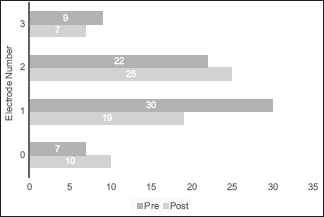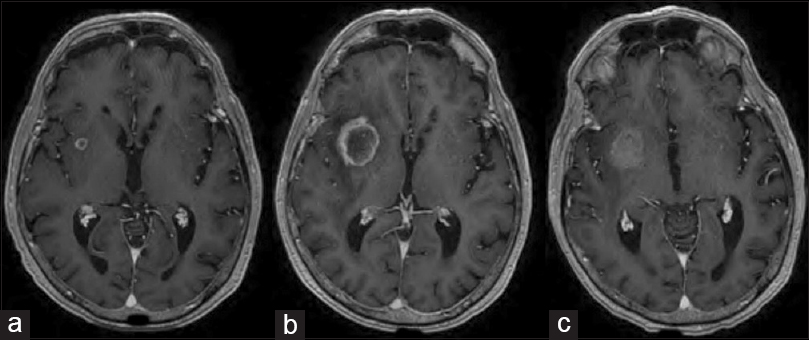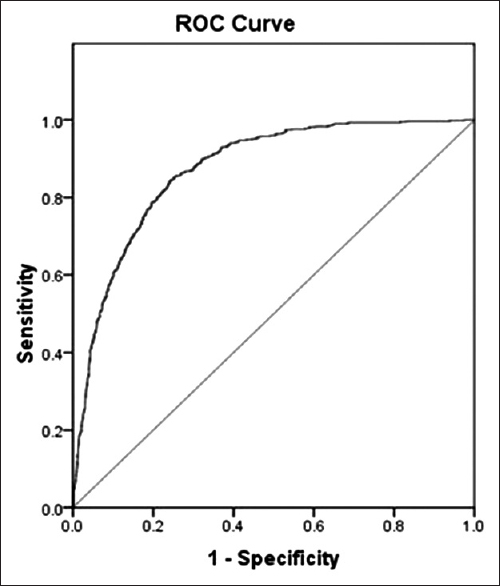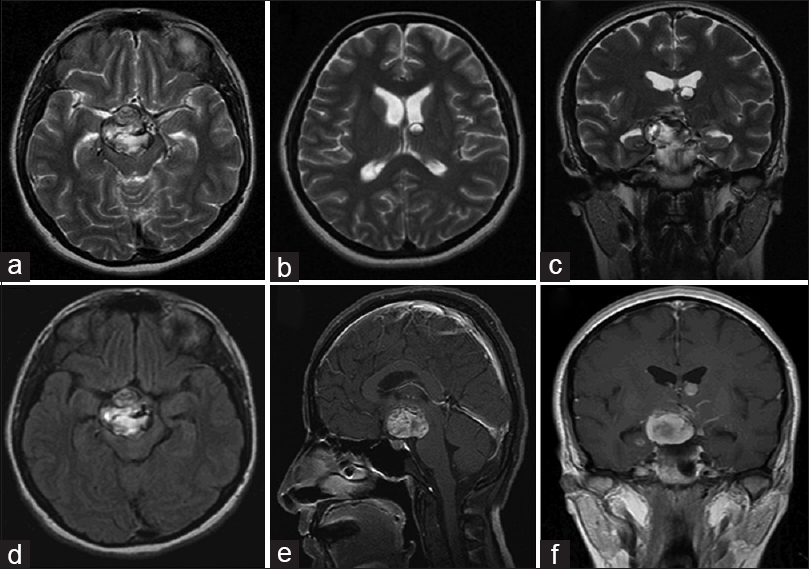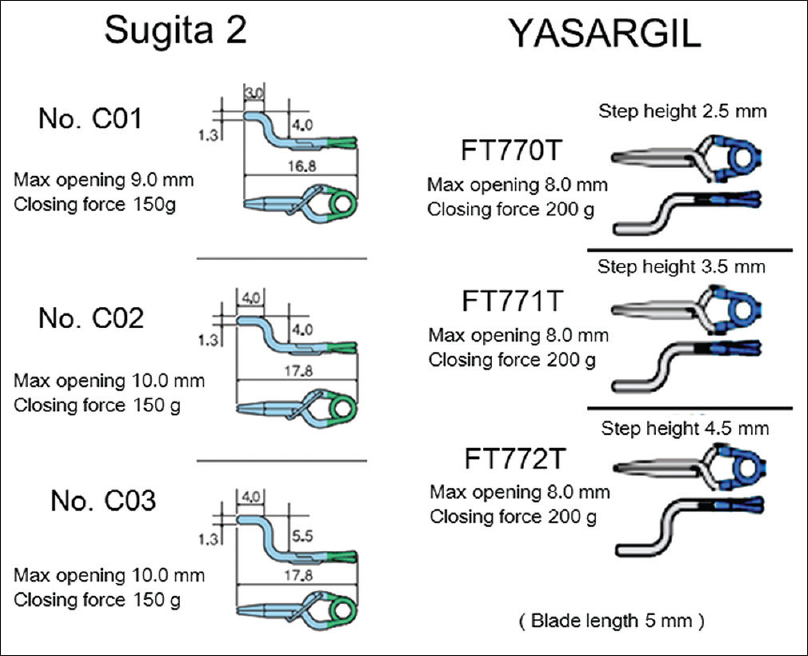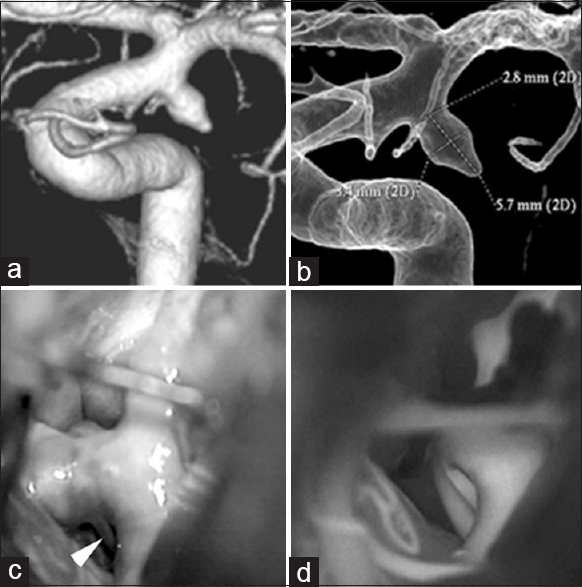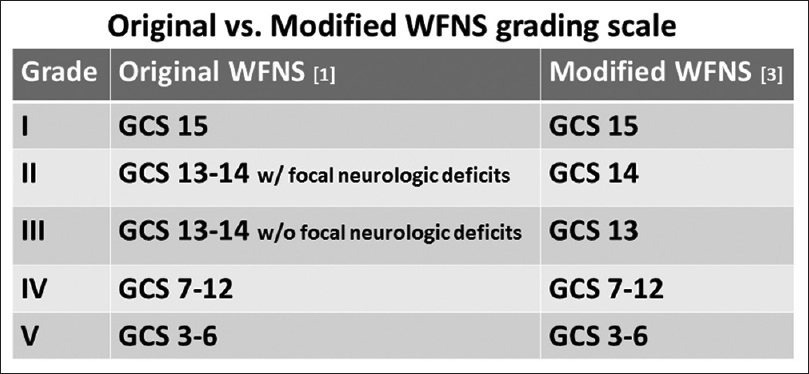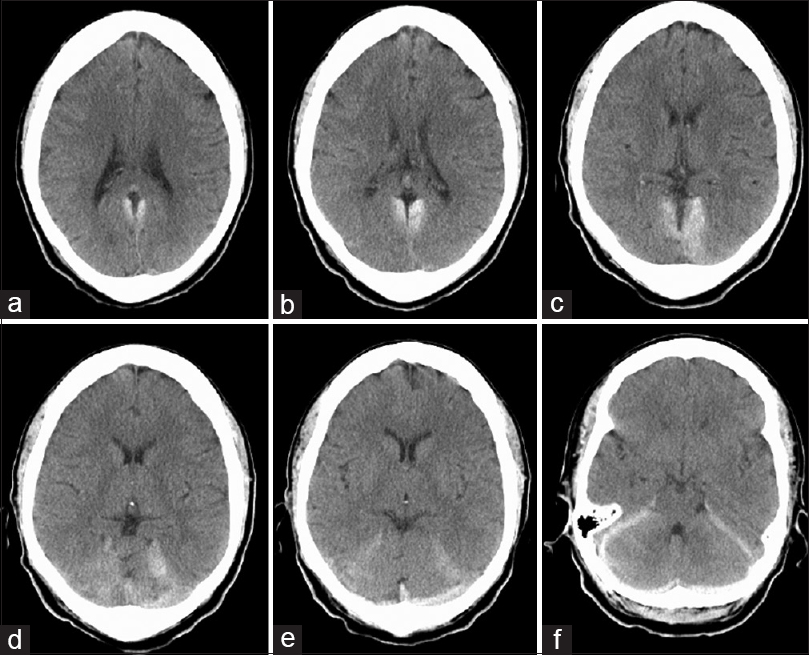Rapid assessment of gait and speech after subthalamic deep brain stimulation
Date of publication: 02-Aug-2016
Background:Describe a rapid assessment for patients with idiopathic Parkinson's disease (PD) and deep brain stimulation of the subthalamic nucleus reporting worsening speech and/or gait problems.
Bevacizumab for the treatment of post-stereotactic radiosurgery adverse radiation effect
Date of publication: 02-Aug-2016
Background:Adverse radiation effect (ARE) is one of the complications of stereotactic radiosurgery. Its treatment with conventional medications, such as corticosteroids, vitamin E, and pentoxifylline carries a high risk of failure, with up to 20% of lesions refractory to such medications. In addition, deep lesions and those occurring in patients with significant medical comorbidities may not be suitable for surgical resection. Bevacizumab is an antiangiogenic monoclonal antibody against vascular endothelial growth factor, a known mediator of cerebral edema. It can be used to successfully treat ARE.
Intrathecal baclofen therapy for spasticity: A compliance-based study to indicate effectiveness
Date of publication: 02-Aug-2016
Background:Intrathecal baclofen (ITB) therapy using a programmable battery-based pump is a well-recognized option in the treatment of patients with refractory spasticity. Improvements in clinical scale scores for muscle spasticity among this heterogeneous group of patients may not reflect the functional benefits of this therapeutic option. The aim of our study is to report the efficacy of ITB therapy by setting the patient's compliance at the 2-year follow-up after pump implantation as an indicator of treatment efficacy, as appreciated by the patients or their caregivers.
Clinical outcome prediction in aneurysmal subarachnoid hemorrhage – Alterations in brain–body interface
Date of publication: 01-Aug-2016
Background:Brain–body associations are essential in influencing outcome in patients with ruptured brain aneurysms. Thus far, there is scarce literature on such important relationships.
Optic chiasmal cavernous angioma: A rare suprasellar vascular malformation
Date of publication: 01-Aug-2016
Background:Suprasellar cavernous malformation in the optic pathway is not commonly encountered. To date, there are only few reports present in the literature.
Utility of crankshaft clips for middle cerebral artery aneurysms: A single-center experience of 150 cases
Date of publication: 01-Aug-2016
Background:Applying more than one clip for a complicated-shaped aneurysm is an established strategy, particularly for middle cerebral arteries (MCA). However, obliterating the cleft of the internal elastic lamina with a single clip is theoretically possible because the line is usually on a single plane. Crankshaft clips were reformed for that purpose decades ago, but are not widely used and have been described in almost no report ever since.
Predictors of 30-day mortality in patients with spontaneous primary intracerebral hemorrhage
Date of publication: 01-Aug-2016
Background:Intracerebral hemorrhage (ICH) is a life threatening entity, and an early outcome assessment is mandatory for optimizing therapeutic efforts.
Comparative outcome analysis of anterior choroidal artery aneurysms treated with endovascular coiling or surgical clipping
Date of publication: 01-Aug-2016
Background:Treatment of anterior choroidal artery (AChA) aneurysms with endovascular coiling or surgical clipping may increase the risk of ischemic complications owing to the critical territory supplied by the AChA. We analyzed the surgical results of endovascular coiling and surgical clipping for AChA aneurysms performed in a single institution, as well as the role of indocyanine green-videoangiography (ICG-VAG) and motor-evoked potential (MEP).
Modified world federation of neurosurgical societies subarachnoid hemorrhage grading system
Date of publication: 01-Aug-2016
Pure tentorial subdural hematoma from rupture of aneurysm along the transmastoid branches of the occipital artery
Date of publication: 01-Aug-2016
Background:Pure subdural hematoma (without subarachnoid, intraventricular, or intraparenchymal hemorrhage) due to a ruptured intracranial aneurysm is rare. Most reported cases involve an aneurysm along the internal carotid artery, posterior communicating artery, or middle cerebral artery. No reports have described an aneurysm along the transmastoid branches of the occipital artery.


